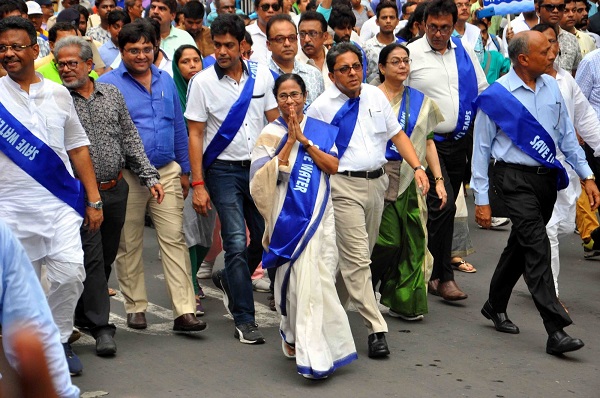
Kolkata, West Bengal Chief Minister Mamata Banerjee on Friday marched on the streets of Kolkata with her Cabinet colleagues, school students, civil society representatives and sportspersons to spread awareness about water conservation.
Banerjee walked a four-kilometre distance from Jorasanko Thakurbari, the house where Nobel laureate Rabindranath Tagore was born, to Mahatma Gandhi’s statue on Mayo Road as part of observance of ‘Save Water Day’ in West Bengal.
Youths, non-governmental organisations, and a large number of Trinamool Congress workers and ordinary people took part in the march, with the slogan ‘Save Water – Save Life’.
The participants carried banners and posters urging people to avoid wastage of water.
“Let us make a beginning and start conserving water. We have to realise that it is a precious commodity,” the Chief Minister said, while asserting that her government has created over three lakh water bodies in the state, besides laying huge emphasis on rain water harvesting through the ‘Jol horo, Jol bhoro’ scheme.
The participants took a pledge to conserve water in every possible way.
A theme song penned and composed by the Chief Minister and sung by Indranil Sen was played during the programme. Banerjee called upon school students to play a big role in spreading awareness of water conservation.
The NITI Aayog recently said 40 per cent of the country’s population would not have any access to clean drinking water by 2030.
A leading water expert, however, has said West Bengal is fortunate enough in receiving rainfall but there should be stress on avoiding water-intensive crops and the state must carry on the water conservation work.
Though the water level in Kolkata is depleting fast, the city is “fortunately a hydrologically subsidised city as we have the Hooghly river. It has not dried as it is a tidal river,” Kalyan Rudra told IANS.









